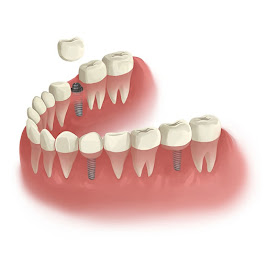Dentistry Insights: Extracting Front Teeth vs. Molars - Unveiling the Differences
Introduction
Dentistry, as a medical field, involves various procedures, including tooth extractions.Are Teeth Easier to remove in Dubai One common question that often arises is whether extracting front teeth is easier than extracting molars. While each extraction case is unique, there are certain factors that differentiate the two processes.
- Tooth Anatomy and Root Structure
Front teeth, also known as incisors and canines, typically have a single root and a simpler anatomical structure compared to molars. Molars, located at the back of the mouth, have multiple roots and a more complex structure. This fundamental difference in anatomy contributes to the perception that front teeth extractions are generally easier.
The single-root structure of front teeth often allows for a more straightforward extraction process. In contrast, the multiple roots of molars may require additional effort and precision during extraction.
- Accessibility and Visibility
Front teeth are more accessible and visible than molars. The proximity of front teeth to the front of the mouth provides dentists with better visibility and easier access during the extraction process. This makes it easier for them to grasp and manipulate the tooth during extraction.
Molars, being located at the back of the mouth, can be challenging to access and visualize. Limited visibility can complicate the extraction procedure, requiring additional tools and techniques to ensure a successful outcome.
- Bone Density and Surrounding Tissues
The bone density in the front of the mouth is generally lower than in the back. Lower bone density can make it easier to extract front teeth as there may be less resistance during the extraction process. However, this doesn't necessarily mean that front tooth extractions are always less challenging, as individual variations in bone density can still play a significant role.
Molars, situated in a region of higher bone density, may require more force and precision to navigate through the surrounding tissues. Dentists must carefully evaluate the patient's specific case to determine the optimal approach for extraction.
- Patient Comfort and Experience
Front tooth extractions are often perceived as less traumatic for patients due to their single-root structure and accessibility. Patients may experience less discomfort during and after the procedure, contributing to an overall more positive extraction experience.
Molar extractions, on the other hand, may involve a more extended and potentially more uncomfortable process. Dentists must consider the potential impact on patient comfort and address any concerns to ensure a positive patient experience.
- Special Considerations for Molar Extractions
While front teeth are generally considered easier to extract, it's essential to note that certain factors, such as the presence of dental crowns, root canal treatments, or anomalies in tooth anatomy, can complicate any extraction procedure. Molar extractions may require additional considerations and expertise, especially in cases involving impacted or severely damaged molars.
Conclusion
In the realm of dentistry, comparing the extraction of front teeth to molars reveals distinct differences in anatomy, accessibility, and patient experience. While front teeth may be perceived as easier to extract due to their simpler structure and visibility, each extraction case is unique and requires careful consideration of various factors. Dentists play a crucial role in assessing these factors to ensure a successful and comfortable extraction process for their patients.


Comments
Post a Comment